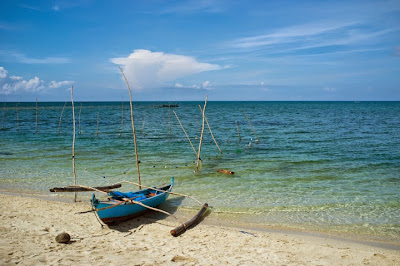This was my last solo adventure before my overall health succumbed to infections and allergies which brought back childhood illnesses I thought I never would experience again... oh well.
For the last 5 years or so our family has been going up to Baguio at least twice a year. My dad used to play golf regularly and as such he bought shares in the local golf club to be able to play for free anytime he wanted to. Along with the perks comes free accommodation which we invariably use and avail of every so often or when we feel compelled to especially when the temperature shoots up.
Safe to say that I consider myself a "regular" and that though I am not a local I have an above average knowledge about the comings and goings in Baguio City. And in the last 5 years I've grown accustomed to visiting all the tourist spots so much so that it has become a routine only that unfortunately my greatest observation is that it is getting crowded. The population is dense and the mountains are being overrun by too many houses.
Anyway to go back to the topic at hand. I came across pictures of a place I've never been to, as always, which gave me the urge to check it out. Because as far as I can remember I never had this feeling since the first time I first read through the local tourism office website. This is how I came to know about Mt. Cabuyao.
The directions were pretty straightforward. Take the jeepney going to Green Valley junction which is stationed at Shagem and Otep streets near Burnharm park. Ask to be dropped off at the junction which is marked by an arch right across a Petron Station. Then from there follow the road going to Mount Santo Tomas. Or as I learned by the time I reached the peak, you can use your car all the way up to the peak as the roads are well-paved. The prominent landmarks are the twin radar discs you would see perched atop the mountain.

I woke up at around 5AM to start early and took a cab from the country club to Burnharm Park. The weather was cold but manageable. I took the jeepney as instructed and started my long walk at the Green Valley junction. The hike is fairly easy as you just have to follow the road which is only gradually sloping. The road is lined with houses and you will never be far away from civilization. The hike up never gets boring nor tiring as the scenic vistas will slow you down especially seeing the mountains covered in thick mist serving as backdrop to the houses you will encounter along the way.
As I got higher and higher I saw vegetable plantations carved out from the sides of the mountains. Strawberry season has ended and they were already planting what seemed like Chinese cabbage. On occasion I would see hidden paths by the road which led to these plantations.The trails were muddy at that time as it rained the night before.
By the time I reached the top of the mountain I could already see the twin radar discs. More vegetable plantations were there with a small community tending to them. I was lucky in that the peak was not covered in clouds as I was previously informed that the place gets quickly covered by clouds from time to time.
I walked closer to the satellite disks and found out that these were military installations back then during the American period. The site was off limits to visitors but there is a small path leading to a view deck. I was told the road continues up to the Mt. Sto. Tomas which is the highest peak in Baguio; It would take an extra hour to reach the peak. I attempted to continue on to the peak of Mt. Sto. Tomas but I had to go back already because it was already lunch time so I just looked around and took pictures of people there. I eventually hitched a ride with a local all the way back to the Green Valley junction.
By the way, the locals call the place Ra-Dar owing to the two radar discs. I like it.

































